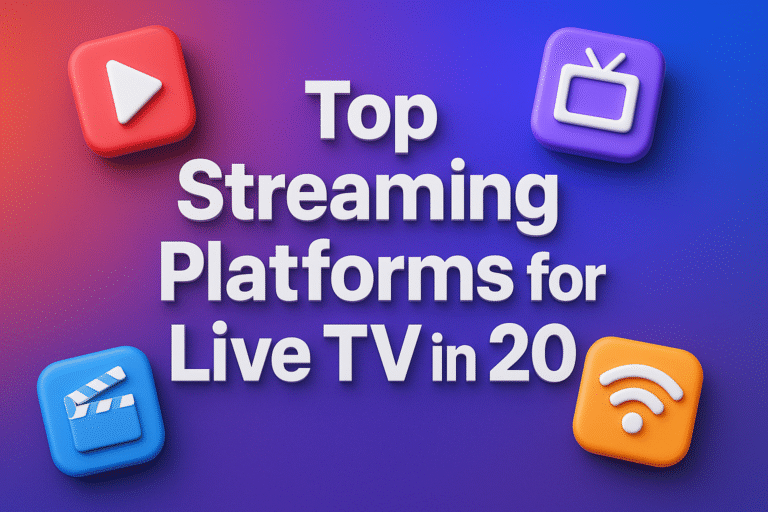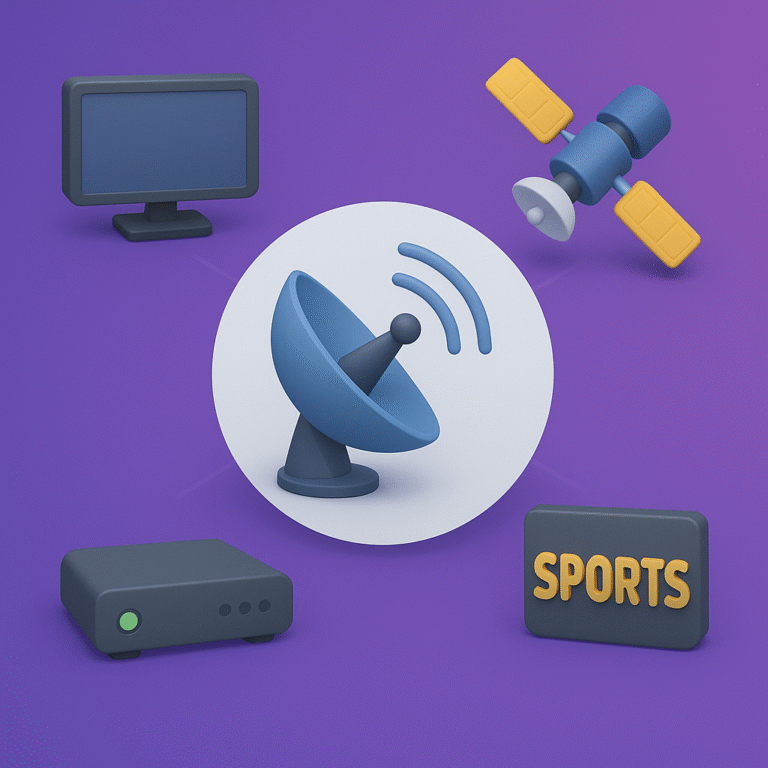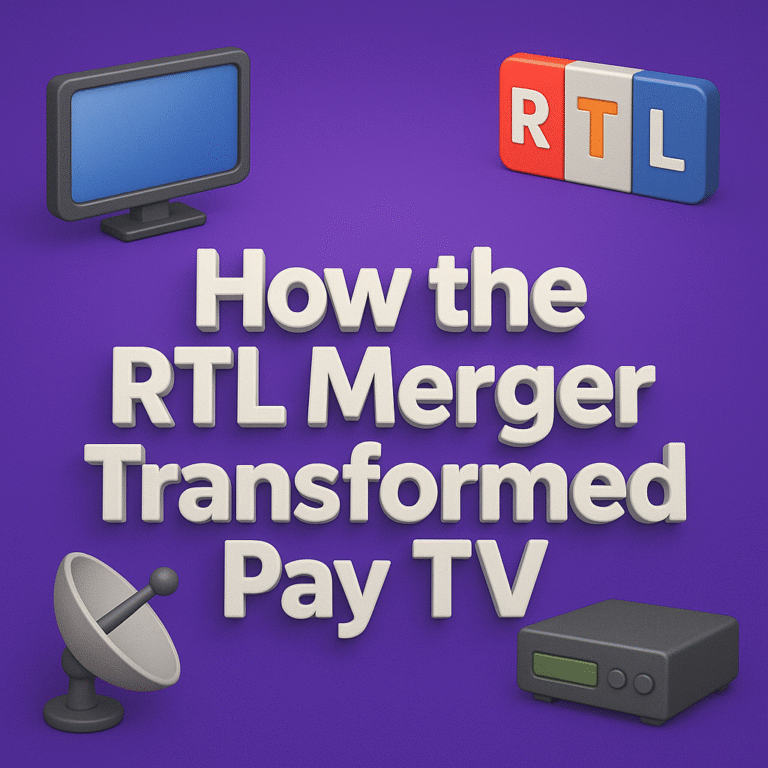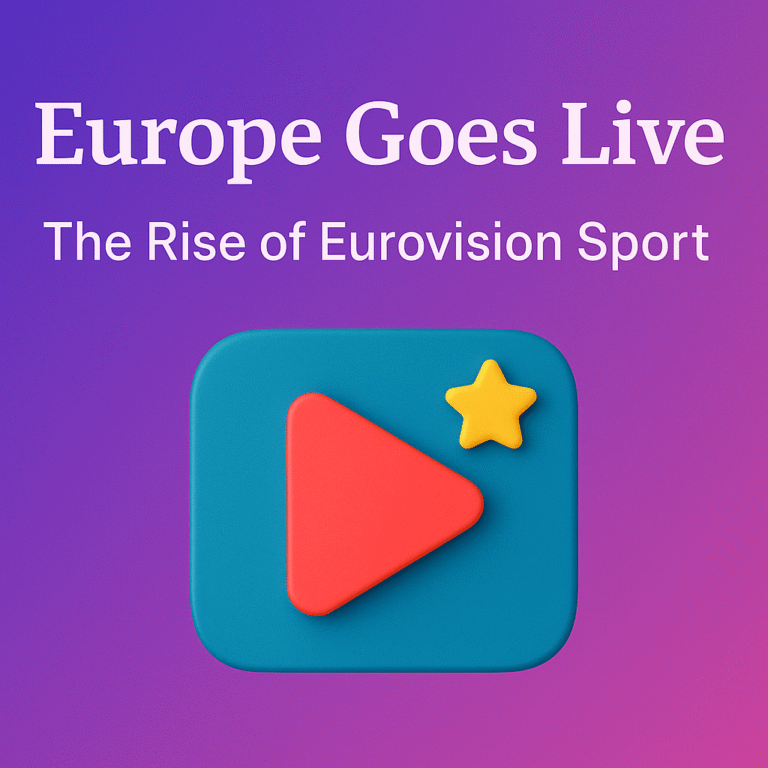Best Free Satellite Channels for Danish Viewers – Movies, Sports & News
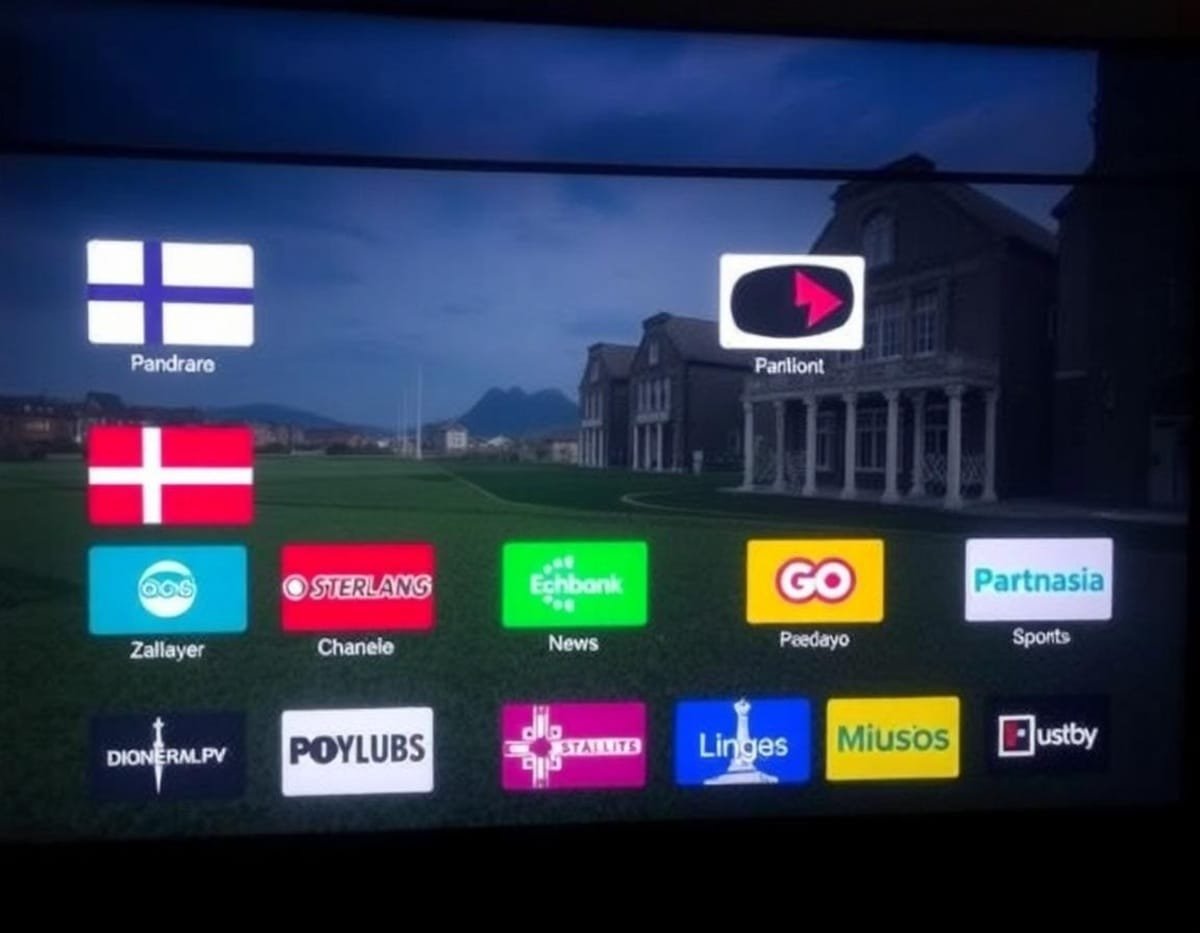
Best Free Satellite Channels for Danish Viewers – Movies, Sports & News [2025 Guide]
Free satellite TV channels remain a popular way for Danish viewers to enjoy movies, sports, and news without monthly fees or complex subscriptions. These channels broadcast freely via satellites like Astra, Hotbird, and Thor, covering a wide range of entertainment and local news that cater to Scandinavian tastes. In 2025, access to free-to-air channels continues to be strong, offering great variety whether you’re into the latest blockbusters, live sports, or up-to-the-minute news updates.
This post will guide you through the best free satellite channels for Danish viewers, including practical tips on how to tune in, the latest frequency info, and how satellite compares to IPTV options. If you’re curious about enjoying premium content without breaking the bank, this overview will help you set up the perfect free satellite TV experience. For those interested in IPTV, check out our Scandinavian IPTV overview for a detailed comparison.
Latest Satellite Frequency Updates for Scandinavia and Germany
To enjoy the best free satellite channels for Danish viewers — movies, sports, and news — staying current with satellite frequency updates is essential. Satellites and broadcasters occasionally change frequencies, symbol rates, or encryption methods, affecting your ability to tune in. In 2025, the key satellites covering Scandinavia and Germany—like Astra, Hotbird, and Thor—have updated some frequencies. Whether you’re adjusting your dish or planning your channel scan, this quick update will help you hit the mark.
Satellite Frequencies for Scandinavia
Scandinavia mainly relies on Thor and Astra satellites for free-to-air channels. Thor is positioned at 1°W and caters well to Nordic countries, while Astra 19.2°E covers a broad range including both Germany and Denmark. Here are some frequent satellite frequencies you should keep in mind:
| Channel | Satellite | Frequency (MHz) | Polarization | Symbol Rate (kS/s) | Encryption |
|---|---|---|---|---|---|
| DR1 (Denmark) | Thor 1°W | 11787 | Vertical | 27500 | Free-to-Air |
| TV2 (Denmark) | Thor 1°W | 11747 | Horizontal | 27500 | Free-to-Air |
| ZDF (Germany) | Astra 19.2°E | 11362 | Horizontal | 22000 | Free-to-Air |
| ARD (Germany) | Astra 19.2°E | 12226 | Vertical | 27500 | Free-to-Air |
| SVT1 (Sweden) | Thor 1°W | 12130 | Vertical | 29900 | Free-to-Air |
Note: Frequencies may vary slightly depending on your location and dish alignment. Always double-check your receiver’s scan results for the latest channel availability.
Satellite Frequencies for Germany
Germany’s viewers benefit mainly from Astra 19.2°E and Hotbird 13°E satellites. The Hotbird satellite also provides access to international channels and a few free German channels without encryption. Here are key frequencies:
| Channel | Satellite | Frequency (MHz) | Polarization | Symbol Rate (kS/s) | Encryption |
|---|---|---|---|---|---|
| RTL (Germany) | Astra 19.2°E | 12284 | Horizontal | 27500 | Free-to-Air |
| ProSieben | Astra 19.2°E | 12303 | Vertical | 27500 | Free-to-Air |
| DW (Deutsche Welle) | Hotbird 13°E | 10921 | Vertical | 27500 | Free-to-Air |
| Sat.1 (Germany) | Astra 19.2°E | 12053 | Horizontal | 27500 | Free-to-Air |
Tuning in to these frequencies will grant you free access to popular German news and entertainment channels. For German speakers in Denmark, these satellites provide solid content choices without monthly fees.
Tips for Keeping Your Satellite Setup Updated
- Regularly Rescan Channels: Satellite operators may tweak frequencies or add channels during the year. Running a scan every few months catches these changes.
- Check Receiver Firmware: Updated software can improve signal handling and sometimes automatically update frequency lists.
- Keep Dish Alignment Sharp: Even the best frequencies won’t help if the dish isn’t properly aligned. Small shifts in dish position can cause signal loss.
- Use Reliable DVB-S2 Receivers: For higher quality and more stable reception of HD channels, DVB-S2 compatible receivers remain best in 2025.
If you want a detailed guide on tuning your satellite setup and exploring available free channels, the 2025 Guide to Free Freesat on Sky Box can be a great start.

Photo by Mike van Schoonderwalt
By staying up to date with these satellite frequency updates for Scandinavia and Germany, you ensure smooth access to free-to-air channels across movies, sports, and news—perfect for Danish viewers aiming to keep their entertainment costs down.
Adding and Updating Satellite Frequencies on Common Receivers
Keeping your satellite receiver up to date with the latest frequencies is key to enjoying the best free satellite channels for Danish viewers – movies, sports & news in 2025. Satellite broadcasters change frequencies or add new channels, so knowing how to add or update these frequencies on your receiver ensures you don’t miss out. This section walks you through simple, practical steps to update satellite frequencies on most common receivers.
How to Add New Frequencies Manually
Most receivers allow you to manually enter frequency data if a channel isn’t showing up or you want to add new free-to-air channels quickly. Here’s a straightforward way to do that:
- Access the Setup Menu
Press the MENU or SETUP button on your remote to bring up the receiver’s main settings. - Find Satellite or Transponder Settings
Look for options labeled “Satellite Setup,” “Transponder List,” or “Manual Frequency Input.” - Choose the Satellite
Select the satellite you want to update, e.g., Astra 19.2°E, Hotbird 13°E, or Thor 1°W. This matches the satellite position on your dish. - Enter Frequency Details
Input the specific frequency, polarization (Horizontal/Vertical), symbol rate, and sometimes FEC. For example, to add DR1 on Thor, use:- Frequency: 11787 MHz
- Polarization: Vertical
- Symbol Rate: 27500 kS/s
- Save and Scan
Save the new settings, then run a manual or blind scan on that frequency to find available channels.
Many receivers support storing multiple transponders per satellite, so you can build a custom list for fast rescanning next time.
Updating Frequencies Automatically with Receiver Firmware
If you prefer less hassle, many modern receivers offer updates via satellite or USB:
- Satellite Updates: Some receivers fetch frequency updates directly via firmware menus as broadcasters send updates through satellites. This happens during automatic channel scans or firmware update checks.
- USB Firmware/Channel List Updates: Visit reputable sources like Updated transponders for Astra, Hotbird, Intelsat for the latest frequency lists. Download the file and import it into your receiver via USB.
Keeping firmware current ensures your receiver understands new frequency changes and supports the latest satellite tech, like DVB-S2.
Tips for a Stable Satellite Setup
With frequencies updated, your receiver and dish must be tuned perfectly for a clear signal:
- Regular Rescans: Run a full scan every few months to catch new or shifted channels.
- Dish Alignment: Fine tune the dish angle; even a small shift can cause signal drops.
- Quality Cables & LNB: Use good coaxial cables and a quality LNB for minimal signal loss.
- DVB-S2 Receivers for HD: These receivers handle today’s HD broadcasts better than older DVB-S boxes.
Getting familiar with your receiver’s setup menu and frequency update options means you won’t struggle to keep your free satellite channels working smoothly throughout the year.
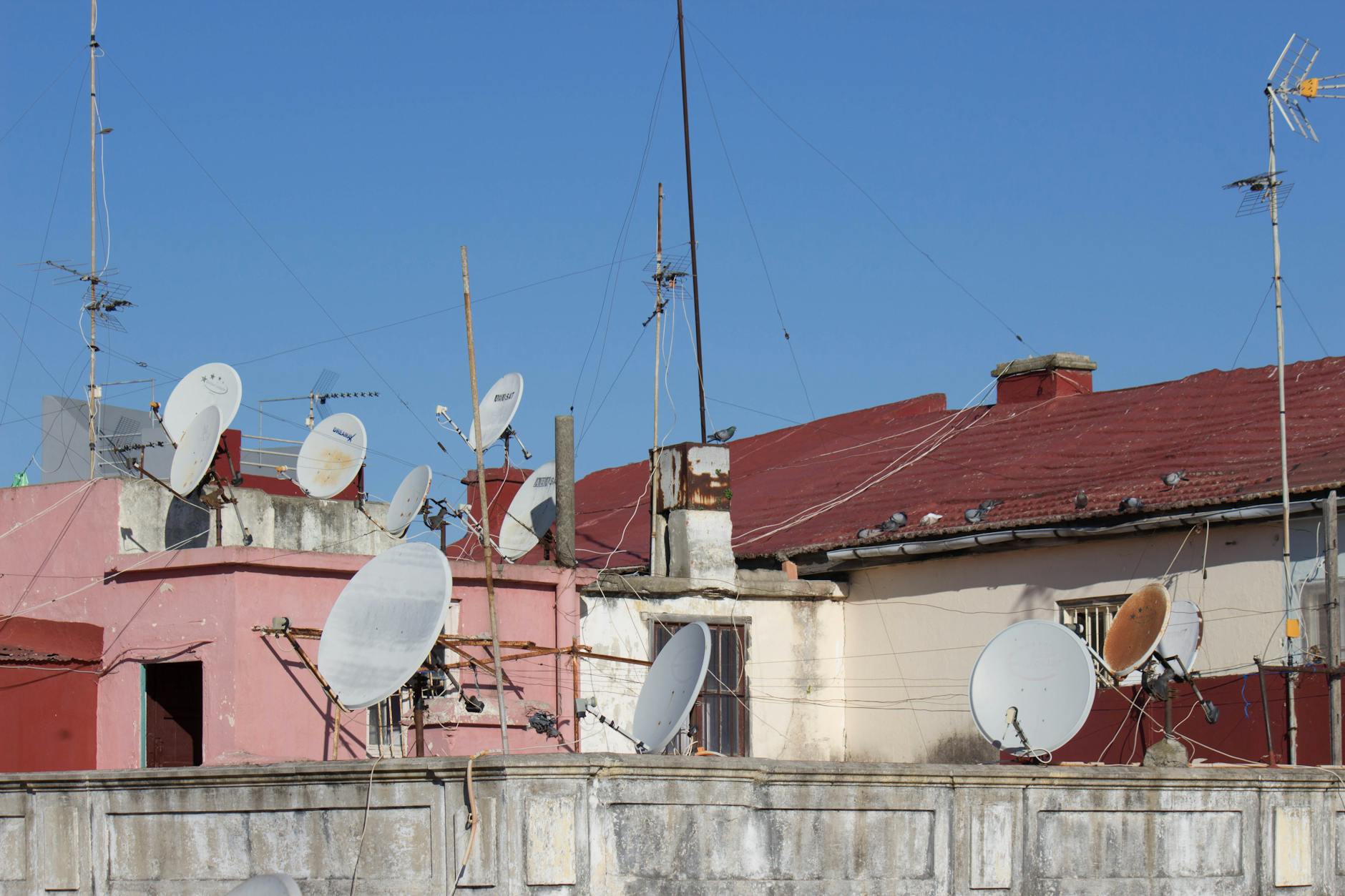
Photo by Carlo Jünemann
For more detailed guides on satellite setups and free channel tuning, the CCcam2 Blog regularly shares updates and helpful tips on satellite frequency changes and receiver configurations. This will keep your satellite TV experience fresh and enjoyable without monthly subscription costs.
Seasonal Sports Coverage on Free Satellite Channels
When it comes to sports, timing is everything. Many sports fans in Denmark know that some of the best action happens only during certain seasons—from the intense hockey matches in winter to the summer football leagues. The great news is, you don’t need expensive subscriptions to catch this live excitement. Free satellite channels offer seasonal sports coverage that changes throughout the year, making it easy to follow your favorite sports without adding costs.
Whether you’re tuning into international tournaments or local leagues, satellite broadcasts bring a diverse sports lineup that fits the Danish viewer’s interests. Let’s break down what to expect from seasonal sports coverage on free satellite TV.
Football and Soccer Leagues
Football remains king in Denmark, and free-to-air satellite channels often carry live matches and highlights during the active seasons. Channels from satellites like Thor 1°W and Astra 19.2°E typically offer access to:
- European tournaments: Some free satellite channels broadcast select UEFA and national league matches during peak seasons.
- Local Danish leagues: Occasional coverage of Danish Superliga or domestic cup matches is available.
During football’s fall and spring seasons, these channels ramp up their coverage with live games, analysis, and goal highlights, making it easier to keep your finger on the pulse of the game.
Winter Sports: Ice Hockey and Skiing
Winter sports have a special place in Scandinavian hearts. Free satellite channels capture this spirit by broadcasting major ice hockey games, especially those related to the Danish or Swedish leagues. Skiing, biathlon, and other winter competitions also have dedicated slots during their peak seasons.
You’ll find:
- Ice hockey matches, particularly from regional leagues and international championships.
- Winter Olympic sports that often become available on free-to-air bundles during Olympic years or World Championship seasons.
This seasonal focus means that during colder months, your free satellite TV transforms into a winter sports hub without any added subscription fees.
Summer Sports & Outdoor Events
Summer sports like cycling tours, athletics, and tennis tournaments often feature on free satellite channels during warmer months. These events, which draw large audiences, are regularly covered in part or whole via free broadcasts.
Look for:
- The Tour de France and major cycling events عبر المحطات الفضائية المفتوحة.
- Grand Slam tennis tournaments mixed in with other sports highlights.
- Athletics meets such as European and World Championships streamed or featured in highlight packages.
This ensures your free satellite setup keeps pace with the dynamic range of summer sports.
Key Satellites for Sports Fans in Denmark
Most free sports coverage is accessed through these satellites:
| Satellite | Position | Notes |
|---|---|---|
| Thor | 1°W | Strong Nordic focus, great for Danish and Scandinavian sports |
| Astra | 19.2°E | Mix of German, European sports and international coverage |
| Hotbird | 13°E | Offers some international free sports channels, diverse sport types |
By tuning into these satellites during sports seasons, you catch live action, expert commentaries, and highlights that keep you in the game.

Photo by Roman Skrypnyk
Tips for Getting the Most from Seasonal Sports Coverage
- Stay updated on frequency changes: Sports channels sometimes move between satellites or frequencies as broadcasters adjust seasonal lineups.
- Use a DVB-S2 receiver: These receivers handle HD broadcasts and can provide clearer sports viewing.
- Regularly re-scan your receiver: Don’t miss out on new sports or special event channels.
- Combine satellite TV with verified streaming options for wider sports coverage during busy seasons.
If you want to stay on top of satellite updates that include seasonal sports channels, the Top 5 Android 4K Satellite Receivers Compared offers guidance on hardware that keeps your setup current and ready.
Free satellite TV remains the go-to solution for Danish sports fans who want to experience live, seasonal sports without the cost. Tune in at the right time, and the thrill of the game is right on your screen.
Free-to-Air Cultural Events and Entertainment for Danish Viewers
For Danish viewers, free-to-air satellite TV offers more than just movies, sports, and news—it’s a window into cultural events and varied entertainment that enrich daily life. Whether you enjoy theater performances, music festivals, documentaries, or cultural debates, many free satellite channels broadcast such content without any subscription fee. This accessibility supports those who want to stay connected to Denmark’s cultural scene and broader European arts from the comfort of their home.
Let’s take a closer look at what kinds of free-to-air cultural programming Danish viewers can tune into, and on which satellites you’ll find these gems.
Cultural Festivals and Arts Programming
Across Scandinavia and Europe, many cultural festivals are partly or fully broadcast free-to-air. From classic music concerts to folk festivals, these events highlight rich traditions and contemporary artistic expression. Danish viewers can enjoy:
- Classical music concerts from venues like the Danish National Symphony Orchestra or European festivals.
- Film festivals broadcasts, including documentaries and art-house cinema highlights.
- Theater and opera performances from renowned Danish theaters or international companies.
Satellites like Thor 1°W and Astra 19.2°E often carry channels that broadcast these arts events. Public broadcasters such as DR (Denmark’s national broadcaster) frequently air cultural documentaries and special event coverage, all free-to-air.
Educational and Documentary Channels
If you enjoy learning about history, culture, or science, free satellite offers several documentary and educational channels that highlight Nordic heritage and global stories. These include nature films, archaeological discoveries, and cultural travel series suited to Danish viewers.
Some well-known examples include:
- DR K – Denmark’s channel dedicated to culture, history, and arts programming.
- Arte (via Astra 19.2°E) – A Franco-German cultural channel with documentaries and arts programming, often available free-to-air.
- Phoenix or 3sat – German cultural and current events channels available on Astra, often carrying in-depth documentaries.
These channels enrich your viewing options with strong cultural and educational content, expanding beyond entertainment and into insightful programming.
International Cultural Channels Available Free-to-Air
Free satellite services that reach Denmark also carry a wide variety of international cultural channels that showcase music, dance, theater, and celebrations from around the world. For Danish viewers keen to explore global culture, here are some popular free-to-air options:
| Channel | Satellite | Frequency (MHz) | Polarization | Symbol Rate (kS/s) | Encryption |
|---|---|---|---|---|---|
| ARTE | Astra 19.2°E | 11354 | Horizontal | 22000 | Free-to-Air |
| TV5 Monde | Hotbird 13°E | 11327 | Horizontal | 27500 | Free-to-Air |
| DW Kultur | Astra 19.2°E | 11398 | Vertical | 22000 | Free-to-Air |
These channels not only bring international cultural events to Danish audiences but also support language skills and global awareness.
How to Access These Channels
Most cultural and entertainment free-to-air channels are available via the same satellites popular for sports and news:
- Thor at 1°W: Focuses heavily on Scandinavian content, including Danish cultural programming.
- Astra at 19.2°E: Offers broader European access including cultural channels from Germany, France, and beyond.
- Hotbird at 13°E: Provides international content including Mediterranean and Eastern European cultural broadcasts.
A DVB-S2 receiver and a well-aligned dish are key to receiving these channels clearly. Regular rescanning after frequency updates ensures you don’t miss out on new or seasonal cultural broadcasts.

Photo by Ricky Esquivel
Discovering free cultural programming makes satellite TV a rich resource for Danish viewers seeking inspiration and entertainment without a price tag. This complements other free satellite offerings like movies, sports, and news to round out your viewing choices.
For viewers wanting to explore more satellite-based channel options, guides like our Get Free English Satellite TV Channels Easily | 2025 Update cover how to add cultural and international channels to your lineup.
Comparing Satellite TV with IPTV Options in Scandinavia
When deciding how to watch free movies, sports, and news in Denmark, the choice often comes down to traditional satellite TV or IPTV streaming. Both deliver great content, but they reach your screen in very different ways. Understanding their strengths will help you pick what works best for your lifestyle and setup.
Satellite TV, especially popular in Scandinavia, delivers content directly through a dish antenna from satellites like Astra, Thor, and Hotbird. IPTV, on the other hand, uses your internet connection to stream channels live over the web. While satellite remains reliable and free for many channels, IPTV brings flexibility and variety with newer content options. Here’s a clear look at how they compare.
Coverage and Reliability
Satellite TV shines when you want stable service without reliance on internet speed. Once your dish is aligned, the signal quality holds steady regardless of weather conditions or broadband fluctuations. For Danish viewers, this means tuning into free-to-air channels like DR1 or TV2 without worrying about buffering or lag.
IPTV depends entirely on your internet connection quality. In urban areas with fast fiber service, IPTV streams smoothly and offers access to a large variety of channels including international and specialty content. But slower, less stable internet can lead to freezes or poor image quality. So, IPTV quality is a bit of a “can you see it?” game depending on your bandwidth.
Channel Selection and Variety
With satellite TV, free channels are mostly fixed by the broadcaster’s satellite footprint. Scandinavia benefits from several satellites covering free movies, sports, and news. Satellites like Thor at 1°W deliver local and Nordic content, while Astra and Hotbird provide wider European free channels. These include key German and European sports channels, news outlets, and movie broadcasters all free to air.
IPTV platforms open up thousands of options beyond satellite’s typical lineup. They bundle live TV, on-demand movies, international channels, and even niche content for Danish and broader Scandinavian viewers. While some IPTV services require paid subscriptions, others offer free streams or trial periods.
Technology and Equipment
Satellite TV requires a dish, LNB, coaxial cable, and a DVB-S or DVB-S2 certified receiver to get the best HD experience in 2025. Setting this up is usually a one-time investment, and once installed, the system needs only occasional rescans for updated frequencies. This makes it ideal for users who prefer a stable, “set-and-forget” solution. For receiver choices, check out the most reliable satellite receiver brands this year to ensure smooth operation.
IPTV needs a stable internet connection and devices like Smart TVs, Firesticks, or IPTV boxes. It’s plug-and-play but depends on your broadband. No dishes needed, which means less hardware around the home, but also leaves streaming vulnerable to network issues.
Cost and Accessibility
Satellite TV offers many free channels without any ongoing fees besides your equipment purchase and initial setup. Broadcasters keep a solid number of free-to-air offerings, especially for public service channels and some sports or movie content. It’s an economical way for Danish viewers to access established channels.
IPTV often blends free and paid services. Free IPTV apps exist, but many streaming services require subscriptions to access premium channels. IPTV may also come with risks of unstable feeds or unauthorized streams, which makes trusting reputable providers important.
Summary Table: Satellite TV vs. IPTV for Danish Viewers
| Feature | Satellite TV | IPTV |
|---|---|---|
| Signal Delivery | Via satellite dish | Via internet connection |
| Equipment Needed | Dish, LNB, receiver | Internet, compatible player (TV/box) |
| Channel Variety | Fixed free-to-air lineup | Large variety, including paid and free |
| Reliability | Stable, independent of internet quality | Dependent on internet speed & stability |
| Cost | Mostly free after setup | Free and paid options |
| Ease of Use | Requires installation but mostly hands-off | Easy setup but needs good internet |
Understanding these factors helps you find the best match for your home entertainment. If you want reliable, cost-free access to the best free satellite channels for Danish viewers – movies, sports & news, satellite TV remains a strong choice. However, IPTV enhances your options if you want broader access and don’t mind streaming over the internet.
For those interested in exploring IPTV alongside satellite, the Top Paid IPTV Services for Firestick 2025 provides solid information on popular IPTV options in Scandinavia.
Choosing between satellite and IPTV comes down to your access preferences and viewing habits. Both have their place in Scandinavian homes looking for free, quality entertainment.
Conclusion
Exploring the best free satellite channels for Danish viewers offers a reliable and cost-effective way to access movies, sports, and news in 2025. Regularly updating satellite frequencies and maintaining your dish and receiver ensure smooth reception of these free-to-air broadcasts from key satellites like Astra, Thor, and Hotbird.
Balancing satellite TV with IPTV options can broaden your viewing choices, combining free stable signals with flexible internet streaming. Whether you prefer the trusted quality of satellite or the variety of IPTV, both methods serve Danish viewers looking to enjoy diverse content without high costs.
Thank you for joining this guide. Stay tuned to frequency updates, keep your setup ready, and enjoy all the free entertainment options available. Your next favorite channel is just a scan away.
For more details on IPTV options in Scandinavia, check out the best legal IPTV providers for Scandinavia and Germany.


